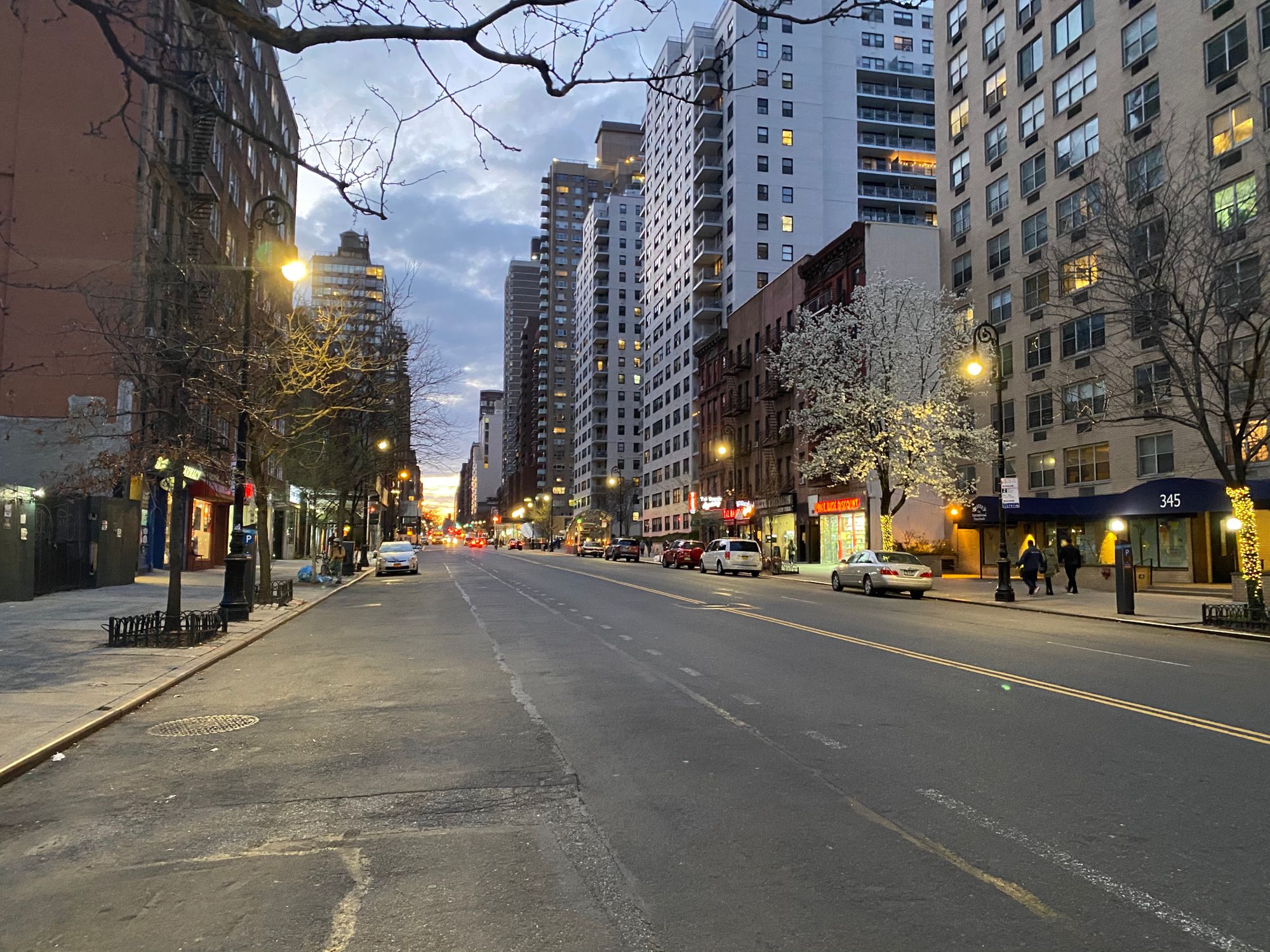Can we ever go back?
Now that the work-from-home genie is out of the lamp, what happens next?

I took this photo on the evening of March 21, on an evening trip to the supermarket. This is the once bustling 86th St., on Manhattan's Upper East Side, on a Saturday night. I stood in the street –where just days earlier I would have been hit by a bus – and there was no traffic anywhere.
Of course, none of this is new or surprising now. Over the last few weeks, we've all learned the finer points of self-isolation and social distancing, and quickly put together work-from-home strategies. Even our industry, the news media – a group of Type A people who usually make it into the office through conditions that would make the postal service jealous – started working remotely.
Getting ready to anchor @wsoctv 5-6:30pm with @DamanyWSOC9. My home studio will soon be my 2nd child’s nursery and YES, I am using boxes of diapers as a tv stand. #workingmom #momlife #COVID19 #WorkFromHome pic.twitter.com/1xcTqPx2yb
— Allison Latos (@AllisonWSOC9) April 13, 2020
Embracing technologies like Zoom and Slack, VPNs and Remote Desktop, every reporter's home now doubled as a mini bureau, anchors originated from studios in spare bedrooms, and producers boothed the show from their kitchen. And it all worked. It still works tonight.
Greetings from the @wmtw Lewiston Bureau! pic.twitter.com/dCn8skZsWE
— Fred “Six Feet Back” Placey (@News_Fred) March 23, 2020
This is of course not meant to diminish those journalists on the front lines, risking their own health to keep the public informed, and telling the stories of those who have no voice of their own. But for those who stayed home, the new normal came in abruptly, sure – but it seems to be going far smoother than any of us would have suspected just a few weeks ago.
The pandemic is ongoing, and we can only fantasize now about when we might be able to complain about our commutes over brunch; but when we do – how do we put the genie back in the bottle?
An argument could be made that the smoothness of these distributed editorial workflows can be attributed to the One Big Story we are all covering. Sure, different reporters may focus on different beats, and outlets across the country work to localize their coverage. But it is all COVID, all the time. We're all reading the same updates. We're all asking similar questions.
When this is over – and I have to hope that it one day will be – how can managers justify having their entire staff venture into the newsroom every day? We've proven that remote can be done. What will change, however, is the variety of stories that fill the pages of newspapers, websites, and stack TV lineups.
This variety is the fundamental shortcoming of communication tools like email and Slack. The usual news cycle spawns countless unrelated stories, with reporters juggling assignments throughout the day. Add in follow ups – and the inability to reasonably find material archived in these systems, and the problem compounds.
It's something we hope to solve – with our tools for newsrooms, to keep track of all stories and planning on one page. Others have tried iNews and ENPS with remote logins, Microsoft Teams, Google Docs, the list – and creativity goes on.
This is the first post on this blog. We hope to tackle problems newsrooms face in these changing times. Please let us know what you would like to see here - [email protected].

